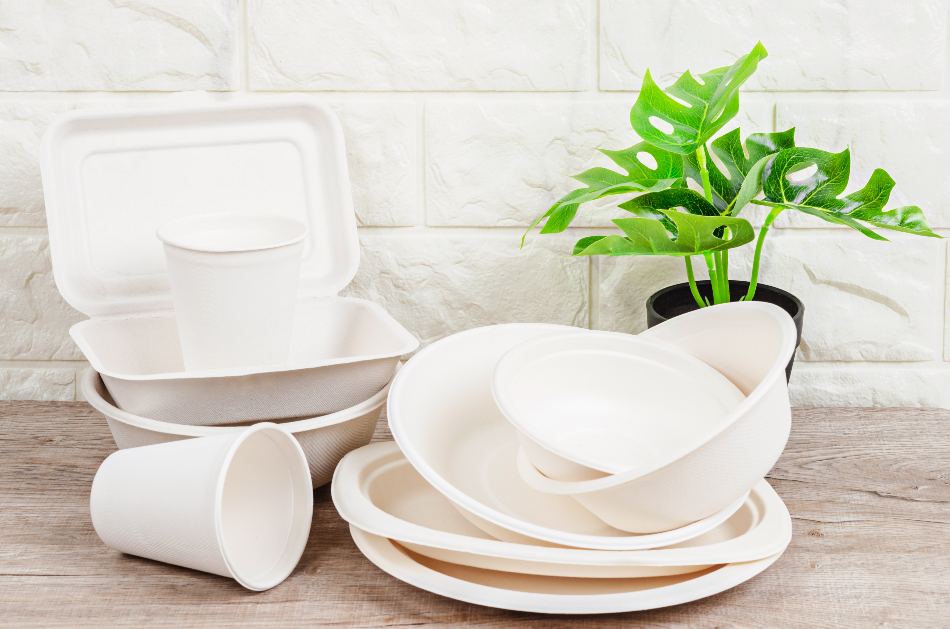
Image Credit: Room's Studio/Shutterstock.com
Waste is a huge problem globally, and the problem increases as the population continues to grow, and urbanization progresses. The US represents a major source of waste; while the country only represents 4% of the world’s entire population, it generates 12% of municipal solid waste. In particular, food packaging waste is a significant source of this waste, with the US only recycling around 50% of the packaging they use, giving it one of the lowest rates of recycling of any developed nation.
To tackle this food packaging waste issue, scientists have begun developing new types of biodegradable packaging material that breaks down easily and does not harm the environment.
The Environmental Impact of Food Packaging
Packaging is essential for maintaining the hygiene and freshness of the food products that we eat. However, the reliance on plastic in these packaging materials is detrimental to the environment, with millions of tons of non-biodegradable plastic waste degrade being added into landfill each year, besides entering our oceans where the congregates are consumed by plankton, then, fish, then, eventually, humans. The environmental and health impacts of plastic food packaging are significant, and while a percentage of these plastic materials can be recycled, only a fraction of it ends up being reused.
However, experts point out that recycling is only one approach to resolving the plastic packaging issue, with many now looking to the other end of the process and attempting to amend the manufacturing side of food packaging in an attempt to reduce the detrimental impact of waste. In recent years, scientists have focused on developing new materials to create food packaging that breakdown instead of lingering for hundreds of years the way that typical plastic products do.
Creating a New Generation of Biodegradable Packaging
Recently, biodegradable plastics have risen in popularity as an alternative material for use in various scenarios where plastic packaging has become the norm. The key difference between the conventional plastic packaging and biodegradable packaging is that while plastic packaging remains stable for hundreds of years, biodegradable materials are broken down by microbes in a fraction of that time.
While biodegradable plastic has been around for some years and its market share continues to show steady growth, these materials have been difficult to adopt in the food packaging sector. The issue is that biodegradable alternatives often do not meet the same criteria as regular plastic packaging in terms of the sturdiness of the barrier they provide in protecting food items against oxygen, water vapor, and other flavors.
To address this problem, the EU funded the HyperBioCoat project, which aimed to create new biodegradable hybrid organic-inorganic coatings to be used not just in food packaging, but also in packaging for cosmetics and medical devices. As a result of the project, a new kind of coating material was developed from biopolymers taken from lignocellulosic biomass and adding them to bioORMOCER®s.
Lignocellulose refers to the fibrous residues taken from fruits. Researchers working on the project explored how they could use biopolymers derived from this source to create a new breed of biodegradable barrier coatings for use with plastic packaging materials. The team investigated how residues collected from a variety of fruits would work. Eventually, they settled on the use of de-pectinated apple pomace, a fruit residue that is generated as a waste product of cider and apple juice production. Berry pomace and cocoa shells also showed promise as potential materials for use in this type of packaging.
After settling on apple residue, the team then explored the different carrier materials that could be used to add the barrier coating. The researchers developed a biopolymer substrate that is both flexible and rigid and to which they could apply to the coating to enable the reliable protection of the food items inside the packaging.
Future Directions
The establishment of this biodegradable coating for use in food packaging is part of a growing trend towards innovating new packaging materials that do not harm the environment. Other notable projects have resulted in the development of 3D-printed straws made of sugar and agar and bowls constructed from mycelium, a product derived from mushroom roots.
Developments such as these will be key to reducing the environmental impact of food packaging in the future. As nations become richer, and populations grow, the demand for food, along with its packaging, will continue to increase. While enhancing recycling rates will help address this problem, it is not a complete solution. Recycling itself requires vast amounts of energy and water, which is counterintuitive to initiatives aiming to reduce emissions and environmental impact.
The only way to comprehensively tackle food packaging waste is to change the materials that food packaging is made from in the first place. If the packaging is constructed from material from substances that are made from renewable sources (such as from the waste products generated from fruit and plants), and that naturally break down, this limits their impact on the environment after use.
References and Further Reading
Eat your food, and the package too. Available at: https://www.nationalgeographic.com/environment/future-of-food/food-packaging-plastics-recycle-solutions/
Guillard, V., Gaucel, S., Fornaciari, C., Angellier-Coussy, H., Buche, P. and Gontard, N. (2018). The Next Generation of Sustainable Food Packaging to Preserve Our Environment in a Circular Economy Context. Frontiers in Nutrition, 5. https://www.frontiersin.org/articles/10.3389/fnut.2018.00121/full
High performance biomass extracted functional hybrid polymer coatings for food, cosmetic and medical device packaging. Available at: https://cordis.europa.eu/article/id/413459-polymers-from-fruit-waste-provide-biodegradable-packaging-materials
Throwaway culture has spread packaging waste worldwide: here’s what to do about it. https://www.theguardian.com/environment/2017/mar/13/waste-plastic-food-packaging-recycling-throwaway-culture-dave-hall
Disclaimer: The views expressed here are those of the author expressed in their private capacity and do not necessarily represent the views of AZoM.com Limited T/A AZoNetwork the owner and operator of this website. This disclaimer forms part of the Terms and conditions of use of this website.